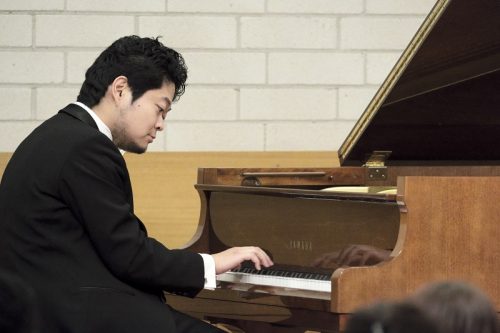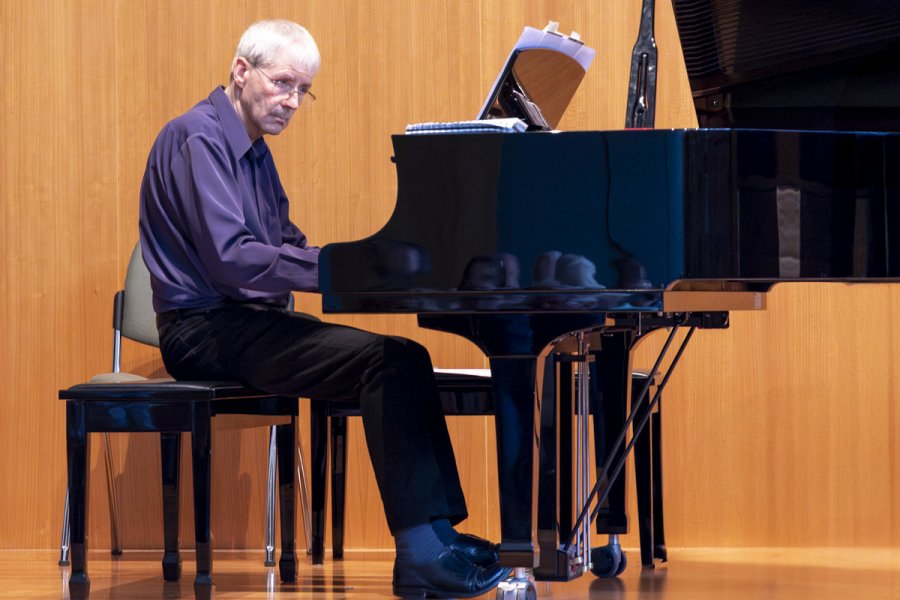MUSIC / “Polish Dance”, Kotaro Nagano, piano. At the Embassy of Poland, March 27. Reviewed by TONY MAGEE.

JAPANESE pianist Kotaro Nagano presented an exquisitely played program of Polish and German piano music at the Polish Embassy.
Kotaro is a tone production expert, a style of playing that has its roots firmly in the 19th century piano school of Theodore Leschetizky, coincidently, also Polish. Kotaro’s playing focusses on melody with exquisite tone production, beauty and legato, combining power with delicate shading and a fluid right hand technique which, he showcased in everything he played.
The event began, however, with the bestowing of the “Decoration of Honour” on Friends of Chopin president Ben James by Ambassador Micha? Ko?odziejski, on behalf of the Minister for Culture of the Republic of Poland.

“Ben James’ passion for the music and culture of Poland is widely known both in Poland and Australia,” said Mr Ko?odziejski.
“He works with tireless dedication and boundless energy in promoting the music of Frédéric Chopin”.
Mr James thanked the ambassador and the Ministry of Culture in Poland and also thanked the entire committee of the Friends, as well as the committee of the Australian International Chopin Piano Competition, of which he has been director and general manager.
Nagano commenced his piano recital with three pieces by Polish composer Moniuszko. Reflecting the evening’s theme of “dance”, the opening Villanella was followed by a Mazurka and a Polonaise, the latter featuring strongly rhythmed left-hand melody contrasted with sonorous flowing right-hand splashes and melodic motives. It was a joyous and majestic reading, filed with energy, beautiful tone production and assuredness.
Schumann’s “Papillons Op.2” followed. Composed in 1831, the title of this superb piano suite means “butterflies” in French. Nagano played the entire work flawlessly, but this was not just an exercise in technique. Once again his tone production was so beautiful, the piano sang out as if 88 voices were emanating from its spruce sound-board. A glorious rendition from someone who knows how to extract sounds of wonder and joy from an instrument.
To close, at least what was printed on the program (oh, yes, encores a-plenty followed), Kotaro chose three pieces by Chopin. The “Polonaise in C Sharp Minor Op.26” began somewhat reservedly, in contrast to most of the recordings and performances I’ve heard over the last 40 years. Now, this was intriguing because as the piece progressed, the intensity grew, but by incremental amounts. The accounts of Chopin’s own playing were of varying degrees of pianissimo, never really reaching a true fortissimo. I liked the way Nagano held back and allowed the audience to savour the beauty of melody and harmony, rather than being abused by a wall of sound.
The famous “Andante spianato and Grande Polonaise Brillante Op.22” closed the program. Oddly the pianist chose to slightly abridge the introduction to the Polonaise section – not sure why. Aside from that, it too was a marvellous performance.
Kotaro is truly a poet of the piano and a testament to the brilliance of Chopin and how his music should be played.
Who can be trusted?
In a world of spin and confusion, there’s never been a more important time to support independent journalism in Canberra.
If you trust our work online and want to enforce the power of independent voices, I invite you to make a small contribution.
Every dollar of support is invested back into our journalism to help keep citynews.com.au strong and free.
Thank you,
Ian Meikle, editor








Leave a Reply